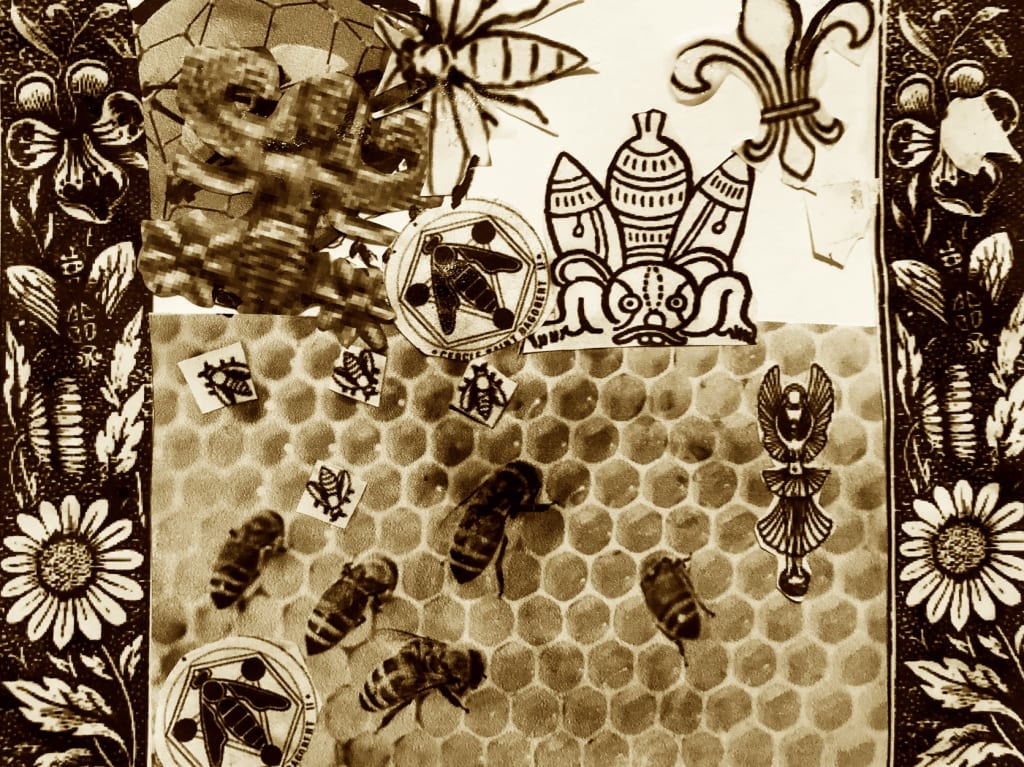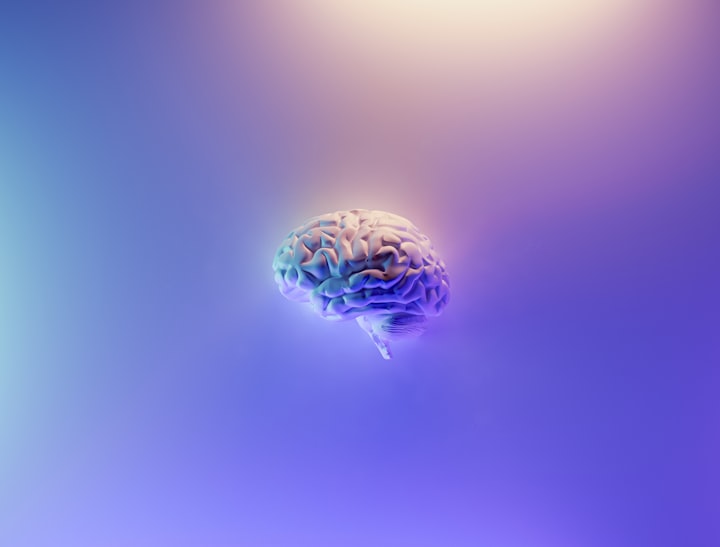The Mysteries of the Queen Bee and the Drones
An Ancient Drama Resurrection

Deborah’s attention was drawn to somewhere. She heard a faint hum that generated an image in her mind’s eye, of industrious bees. When she looked at the video camera at her door, she saw it capture an image of a drone delivering a package. The dampers had been altered and the frequency of the drone made the low hum of a buzzing bee. She was curious.
Deborah had entered engineering, a male dominated field. Gender roles dominating this workplace were in a state of flux. In her third year, she joined the ‘Drone club” as part of a required volunteer activity for her program. She hoped to gain skills that would eventually help her. She had not expected to find a subculture, that went beyond contemporary stereotypes of rich, idle, young gentleman. The group consisted of action-based individuals, who knew not only how to play, but how to control the gyroscopic balance required to swing the pendulum in a complex societal hive.
Deborah was ready to be the change that she wanted to see. She saw herself as part of a world, built upon foundations of a buckyball hive. . Buckyball molecular carbon cages of at least 60, six-sided atoms are found throughout the universe and are thought to have brought trapped gases and amino acids to Earth in meteorites.
Humans overestimate their own importance as individuals. They cannot observe the human social system with the same clarity as they can observe bees. She believed humans need to work together, as a superorganism, to support life.
Many individuals are lulled into a comfortable existence, content to complete their allotted duties so that they could use technology developed by others to feel connected and safe. Her natural disposition was to see beyond immediate gratification. She was prepared to assume her birth rite to protect the future. She was ready to take her place in the social structure of the beehive whether as the female worker who rises through the ranks or the benevolent matriarchal dictator who controls and is controlled by the group.
Drones, female workers and the queen all communicate and influence each other. Drones are parthenogenetic males that contain half of the genes of the queen. They gather neither pollen or nectar, nor contribute to making the honey or royal jelly, but heat the bees’ nest and are high-flying sperm carriers. Using pheromones, they attract other drones to mating swarms, where competition is fierce to mate with newly emerged virgin queen, in her nuptial flight. They were needed to start a new hive.
Deborah built her drone based on a buckyball then customized its aerial acrobatics. Her ability to use goggles, that receive a video feed from cameras mounted to the front of the drone, had improved. It takes courage to learn to look at the video displays from the perspective of the fast-flying drones. She observed and tested how forces created a circular, linear horizontal or vertical path. She was able to control rotations, with front to back in a roll, pitching side to side, or translating positions around the vertical axis in a yaw. She had demonstrated her ability as a pilot, maneuvering her drone in races around a course of obstacles. Establishing herself among the top rankings on the leaderboard came with a reward. She had been informed a surprise would arrive.
She took the package to the kitchen table. The wrapping itself was a gift. It was a poster on ornate parchment, showing the history of beekeeping. Deborah spent the better part of her Saturday morning studying the images. bulgonia
She knew Freemasons, a male only society, and Mormons honoured the bee, but this parchment took information to another level.
Honey-hunting and the dancing bee had fascinated mankind since prehistory. Beehive -shaped huts are found throughout the world. Since 3000 BCE, there have been hieroglyphs of bees from Lower Egypt, the ‘Land of the Bee’. Rituals in Asia Minor, from 3500 – 1750 BC, prescribed the dead be placed in a fetal position and embalmed in honey. The ‘path of the bees’’ is an expression signifying that the air is filled with souls of the dead. Bees were thought to spring from the mouths of the dead and represented the concept of life after death. In Hindu, Christian and Hittite cultures, bees symbolize the reincarnated souls of the dead.
Samson, the last of the Danite Judges, killed a lion, then discovered that bees had taken up residence within the corpse. He used the experience to create a riddle: Out of the eater something to eat; out of the strong something sweet. The answer: A bee. The Syriac text, ‘The Book of the Bee’, described the Bee Maidens, who were like angels with powers of golden knowledge. They fed Zeus honey. Zeus was called the Bee Man and was a shapeshifter who took the form of the Apis Bull. Apis is the Latin name for Bee. In Virgil's myth Bugonia, bees were thought to arise from dead bulls, a metaphor for reviving the social soul.
Several resurrected leaders ate honey after their resurrection. Sacred honey is found on the lips of mortal poets, musicians and orators. The Mayans honoured their god, Ah Mucen Cab who had a Royal Bee Lady, with honey that often had hallucinogenic effects. According to their beliefs, Venus and the Sun descended into the underworld, where the Sun was killed. When Venus associated with the beehive cluster it brought the return of bees vital to life with the Sun, that was then transformed into corn.
Bees and beekeepers were regarded as deities throughout the world. By around 600 BCE, the temple of Neith, in Sais, was called the ‘House of the Bee’. Bees were thought to arise from the tears of the sun gods, Ra and Horus, who were Beekeepers. The Bible says God told Jacob to go to Bethel, the ‘House of the Bees’, meaning a repository of knowledge. The art of beekeeping passed to India where the Bee Goddess, Bhramari Devi, resides in the heart and emits buzzing sounds. Vishnu, Krishna and Indra were called the Madhava, the nectar born ones, whose symbol was the bee. Vedic chants, called the honey doctrine, emulate the humming of bees, used for healing. The Essenes, called the King Bees,were associated with the priesthood and a line of kings stemming from Egyptian pharaohs, who taught beekeeping, agriculture, shepherding and trade crafts. They influenced Christ who is called the Aethereal Bee.
In the first century, the Irish saint Brigid of Kildare, visited the colony of Beckery -the Beekeepers’ Island. Over the centuries, it was believed to be visited by Jesus and Joseph of Arimathea, Merovingian kings, Charlemagne, King Arthur and others. Pope Urban VIII, a Barbarini who changed their coat of arms featuring three horseflies to bees, introduced bees into the Vatican. Napoleon had bees sewn into his coronation robe. By the 1800’s the Fleur -de-Lys, a lily, was thought to represent a bee. There are icons of the Virgin Mary, whose symbol is a Lily and who is called the Queen Bee.
The timeline ended with a bee dressed as an Amazonian warrior. Amazons from Themiscrya honoured bees and Demeter. There were three articles: One of Jacinda Ardern in the Beehive parliament building in New Zealand; another describing the beehive society in China, that represents how common people allocate market resources and carry information that affect economic social development; and the third article about the beehive symbol of Utah, once called Deseret meaning bee.
Deborah finally opened the enclosed envelope. It contained a note. "Please consider this invitation to represent Demeter in a play presented by the drone club. If you accept, please bring an offering of honey to the next race." Deborah reflected that each week there had been honey treats and had not given it a second thought until now. She started baking. Her offering of Greek honey cookies was well-received by the team.
The next day she received another package. The note said. “Thank you for your sweet treat. Enclosed are two jars of dark honey to restore your body and soul. They are full of antioxidants. Put one jar in a bath and enjoy the rest of the nectar in a drink of your choice. Also find the script. Start rehearsing for your part.”
That night Deborah enjoyed her first honey bath, a luxury symbolic of freedom. She read the script in the tub. The play described a nine-day ritual that starts during the nighttime. The first day, sacred gifts were carried along the Sacred Way, the road to Eleusis, by the initiate priestesses called Melissa, or the ‘honeyed one’. They assembled in the marketplace and vowed to remain silent and fast, from dawn to sunset, during the days of initiation. At night, there was singing, dancing and a time to dream.
The second day involved bathing in the waters. There was an evening feast of sucking pig, grains, fruits with more singing and dancing and sacrifices offered to the Demeter, Asclepius and Hygeia, revered as healing deities. The initiates slept in the temple of Asclepius.
Day three was a period of dream incubation, so a curative dream could heal the inner psyche and align individual actions with divine destiny. Day four, the dreams were shared, and a prescription offered guidance for the needed actions to heal the soul and body of physical ailments, emotional distress and spiritual limitations. The fifth day was a procession of torches. Day six was a day of fasting then drinking kykeon. The initiates danced in the lemniscate of the number eight, characteristic of a bee dance, said to integrate left and right brain hemispheres. On day seven, each initiate, with a yellow string connected the right wrist to left ankle, flittered along to the Bridge of Jests and were mocked, to distill and relieve sorrow. Day eight was a mystical nights where a sacred drama was re-enacted.
Deborah read the vaguely familiar Greek myth of Demeter, the Greek ‘Pure mother Bee goddess', and her daughter Persephone. Love at first sight caused the God of the Underworld, called Hades or Pluto, carrying a two-pronged bident, and wearing the Cap of invisibility, to rape Persephone while she was picking narcissus. He abducted her to Hades.
Demeter went to Eleusis disguised as an old woman. She searched for Persephone for nine days. She was invited into a home of a king to care for his children. She felt profound sadness until a servant, Iambe, made her laugh and her heart opened. They drank kykeon, a brew of boiled barley and pennyroyal – a mint – thought to hold the fungus ergot that gives visions. It was a holy rite of initiation and communion. Demeter revealed herself as a goddess and told the mortals to build her a temple, an Asklepion sleep sanctuary and place of healing of the spirit.
When Demeter found out what happened to her daughter she was full of righteous wrath. She inflicted famine on mankind. This caused Zeus to demand that Hades return Persephone. However, before returning from Hades, Persephone was forced to eat a pomegranate seed. That meant she was forced to live part of the year in Hades. She was officially queen of the underworld.
Upon Persephone's return from the well of the underworld, Demeter's grief turned to relief. Mother and daughter offered a gift to the family who housed Demeter. They would teach their son, Triptolemus, the art of agriculture. Demeter whose name is similar to the Greek word dimitriaka, meaning wheat, was the goddess of harvest, agriculture and protector of marriage, honeymoons and social order. Triptolemus was her equal. The passing of knowledge was a sacred marriage, the hieros gamos.
Demeter taught the hierophant Triptolemus, the rituals, ceremonies, conventions and natural laws of cyclic regeneration of life and death, order and chaos, needed to cultivate seeds of wheat and grains. The food of life must die before it is renewed. Triptolemus was given a chariot drawn by two winged dragons. The scene described the constellations Draco and Ophiuchus the serpent bearer, also known as Asclepius, the Greek god of medicine. He used snakes for the poison and cures that could bring the dead back to life and knew the art of beekeeping. There were caves that housed sacred honeybees. When they caught the light from Sirius, that marked the change of seasons, golden honey was made into ichor, the nectar and ambrosia of the gods believed to promote longevity and immortality in Talos, the bronze, winged giant automan.
Triptolemus became the hero of Eleusis, a demi-god who traversed the bridge between gods and humanity. His name means three-fold warrior. He wore the triple crown, that looked like a beehive and is found in the Papal Tiara of the Vatican. It signifies great power of a shrewd and cautious leader who guards sacred wisdom and honour.
Triptolemus told the story of the things done, things shown, things said in the drama. He described Persephone, whose name means ‘destroy or slay’, was the cause of seasonal change, of death and regeneration. He brought the gift of hope to the future.
Deborah felt an emotional release after reading the cultic drama and myth of eternal return. She practiced, rehearsed and surrendered to a purpose, beyond her knowledge, when she performed her role. She became a vessel for immortal souls, residing in her mortal body. Like Narcissus humans are obsessed by their own reflections of what generates the divine. They enter a mirror room, the inner sanctum where gods and humans commune and look to fulfill their destiny.
After the performance she received another package. The note said, “ Well done. This is an Amaryllis belladonna plant, called the naked lady. This plants name means to sparkle. It is in the same family as the narcissus, snowdrop, mint plants, the sacred lotus and the wood rose. These plants are associated with the spirit molecule, used in religious and spiritual practices to generate the divine within, that is seen in dreams."
Deborah acknowledged that the physical act of learning the part, and enacting the play was a transformational experience. The innovative drama altered her thoughts and changed the way she saw herself and the world. Being part of the sacred mystery offered her a means to heal mind and body.
Deborah had been given a clue to a greater mystery of how she would direct her life. She felt the thrill of success. She realized her destiny would be judged by her actions and luck. She regained hope for the wellness of the planet and all those who live in it. She was part of the eternal drama, where the negative of the negative becomes positive: Hope is found in stopping uncertainty. She would provide hope that would help her era escape some of the vengeful justice for the sins of the past. By focussing on good deeds, knowledge and study, she increased the chance of recognizing when divine intervention could lead to redemption and salvation from apocalyptic endings and cataclysmic events.
The semester was ending. Deborah reflected on her experiences in the drone club and wrote an application for entry into a specialty program in medical engineering. She had a plan that explored the frontiers of science and pseudoscience in the physical world. Deborah noticed that she had been an initiate who had initiated the audience. As spectators, they watched her battle for collective redemption of the hive, as she connected to nature and the universe. Her battle became their battle. They experienced her conscious evolution.
The music, dance, drama and rituals triggered the sacred architecture of the mind where ancient knowledge refuses death. Individual differences of sub, super or individual consciousnesses were reduced. The play induced a natural dream-like effect, that resonates within the observers, and enhanced transcendence that passes through time. In the hyperbolic metric space within the hive, she had offered the gifts of the spirit molecule that created a religious visionary state, with mythical figures that caused a shift of thought and opened consideration to other possibilities.
When actual, conditioned or imagined memories are stimulated, the spiritual presence is transferred, amplified and broadcast to others. It alters memories and changes the reasoning chains by thoughts and knowledge that reassembled beyond mathematical possibilities.
She could offer hope for a better world, by shifting the endless loop of programs and memories and unrecognized rote patterns of thinking. Humans share collective thoughts and remember who and where they are in relationship to the past, present and future through memories that arise from primordial origins of life. The spirit molecule of self-transcendence, DMT, is hypothesized to be the result of bacterial DNA, integrated into the genome through epigenetics.
Bees and humans are influenced by genetics and a greater force, that involves endosymbiotic bacterial DNA. Symbiotic relationships with bacteria, capable of quorum sensing, control memories and hold the potential to revolutionarily transform society. Symbiotic bacteria can alter human DNA. They control genes that produce hormones and affect how proteins bind to neurons and adjust chemicals that activate the hippocampal memories and the activity of the pineal gland. Epigenetics can alter behaviour, enhance healing and adjust responses to problems of population growth, pollution and the emotional consequences of dealing with polar political views.
Deborah proposed miniaturization of the her buckyball, into a biodegradable nanoparticle target drone that would deliver chemical payloads of medications to patients and bees who had viruses attacking their mitochondria. She would be the voice of the new queen of the hive. She and her allies would work together, in the race of a lifetime, to reshape the next revolution of reality and manifest a resurrected form of hope from the dreams of the social hive.
About the Creator
Katherine D. Graham
My stories are intended to teach facts, supported by science as we know it. Science often reflects myths. Both can help survival in an ever-changing world.






Comments
There are no comments for this story
Be the first to respond and start the conversation.